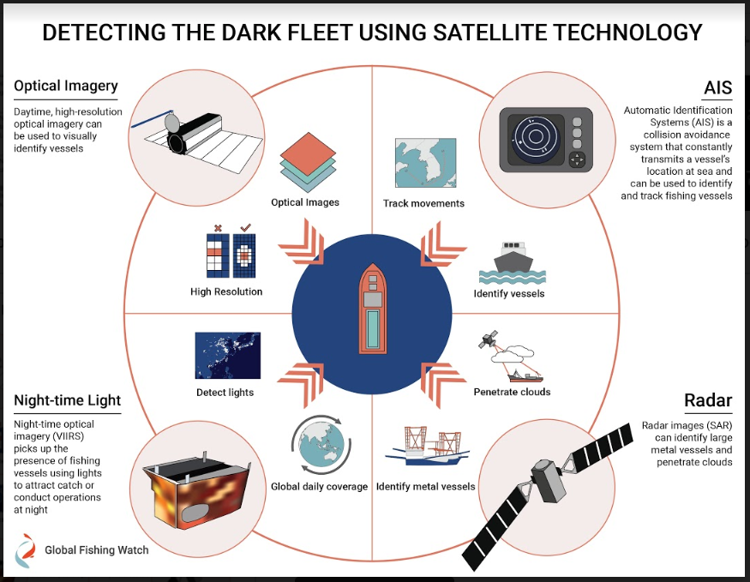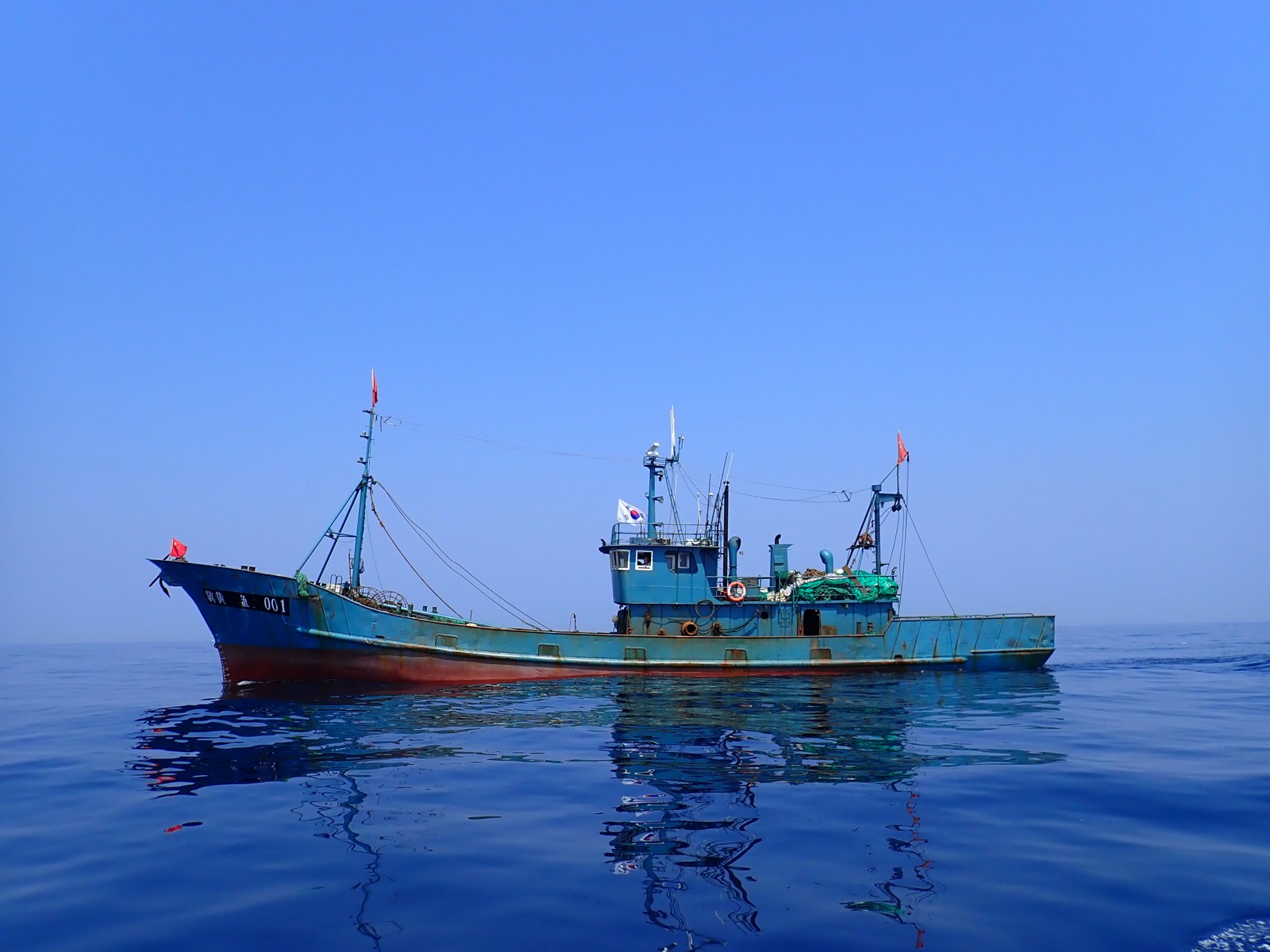A new study lead by Global Fishing Watch and published in the journal Science Advances, reveals massive illegal fishing by foreign vessels in North Korean waters, likely in violation of U.N. sanctions.
By using satellite images from partners KSAT, Planet, ESA and JAXA, in combination with AIS reports, AI & on-the-ground expertise, the study shows the value of satellite imagery in fisheries monitoring and enforcement, exposing hundreds of vessels, known as the dark fleet as they do not publicly broadcast their location or appear in public monitoring systems.
Illegal, unreported, and unregulated fishing threatens fish stocks and marine ecosystems, and jeopardizes the livelihoods and food security of legitimate fishers and communities. As part of implementing Un sustainability goals, KSAT has committed to contribute to the fight against IUU fishing through international cooperation.
IUU fishing is often conducted by “dark fleets”—vessels that do not appear in public monitoring systems —and is therefore difficult to monitor and enforce . Although many dark vessels operate legally and broadcast their positions on country-mandated vessel monitoring systems, these data are often tightly guarded, limiting usability for third-party oversight or transboundary management. Revealing the activities of dark vessels could address this information gap, improving transparency and accountability.
Combining four satellite technologies, (SAR, high res optical, Virrs and AIS), the study has identified widespread illegal fishing by dark fleets in the waters between the Koreas, Japan, and Russia. Although these four technologies have previously been used to estimate fishing and identify individual vessels, they have not been combined to publicly reveal the activities and estimated catches of entire fleets at this scale.

The study detected more than 900 vessels of Chinese origin in 2017, and 700 in 2018, fishing in North Korean waters. The vessels likely caught almost as much Pacific flying squid as Japan and South Korea combined - more than 160,000 metric tons worth over US $440 million in 2017-2018. The study also found about 3,000 North Korean vessels fishing illegally in Russian waters. Competition from trawlers originating from China is likely forcing North Korean fishers to venture further from home in ill-equipped boats, often with tragic consequences.
Combining these satellite technologies can reveal the activities of dark fleets, filling a major gap in the management of transboundary fisheries. Furthermore, these technologies, when accompanied by local expertise, can identify potential hot spots of illegal, unregulated, or unreported fishing.
The study suggests that this analysis represents the beginning of a new era in satellite monitoring of fisheries. Multiple satellite sources have long been available to government agencies for targeted surveillance. However, it is only with recent increases in data availability, accessibility, and computing power that these techniques can now be performed at large enough spatial and temporal scales—and by small, independent groups of researchers—to enable transparent fisheries monitoring.
Read the full study Illuminating Dark Fishing Fleets in North Korea here
